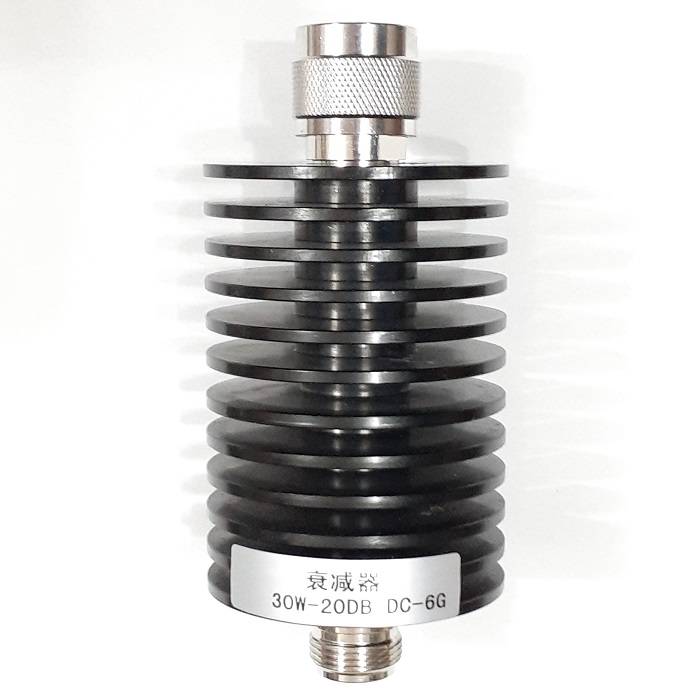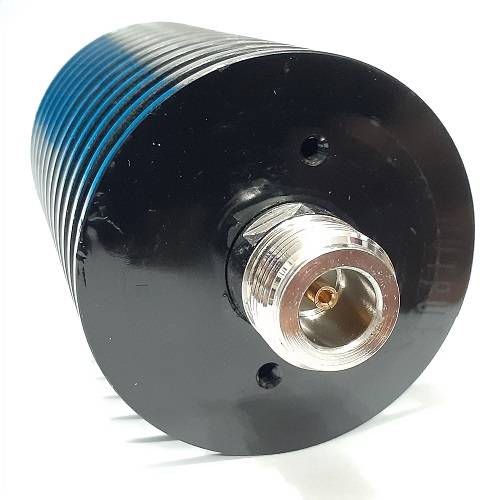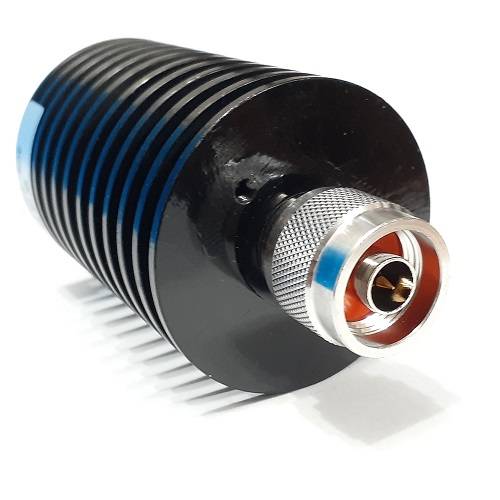Frequency Range GHz DC to 6
Impedance Ohms 50
Attenuation Value dB 20
Maximum Input Power Watts 30
Connector Type N Female To N Male
اَتِنِيْتور يا تضعيف كننده چيست ؟
تضعیفکننده نوعی قطعه الکترونیکی است که بدون اعوجاج قابل ملاحظه شکلموج ، توان سیگنال را کاهش میدهد.
اتنيتور در واقع مخالف تقویتکننده است، هرچند که این دو با روشهای مختلفی کار میکنند.
What is Attenuators?
Attenuators are passive devices. It is convenient to discuss them along with decibels.
Attenuators weaken or attenuate the high level output of a signal generator, for example, to provide a lower level signal for something like the antenna input of a sensitive radio receiver.
(figure below) The attenuator could be built into the signal generator, or be a stand-alone device.
It could provide a fixed or adjustable amount of attenuation. An attenuator section can also provide isolation between a source and a troublesome load.

Constant impedance attenuator is matched to source impedance ZI and load impedance ZO. For radio frequency equipment Z is 50 Ω.
In the case of a stand-alone attenuator, it must be placed in series between the signal source and the load by breaking open the signal path as shown in the figure above. In addition, it must match both the source impedance ZI and the load impedance ZO, while providing a specified amount of attenuation. In this section we will only consider the special, and most common, case where the source and load impedances are equal.
Not considered in this section, unequal source and load impedances may be matched by an attenuator section. However, the formulation is more complex.

T section and Π section attenuators are common forms.
Common configurations are the T and Π networks shown in the figure above. Multiple attenuator sections may be cascaded when even weaker signals are needed as in the figure below.
source: fa.wikipedia.org , allaboutcircuits.com





دیدگاهها
هیچ دیدگاهی برای این محصول نوشته نشده است.